Matthias Wödlinger
DATTA: Domain-Adversarial Test-Time Adaptation for Cross-Domain WiFi-Based Human Activity Recognition
Nov 20, 2024
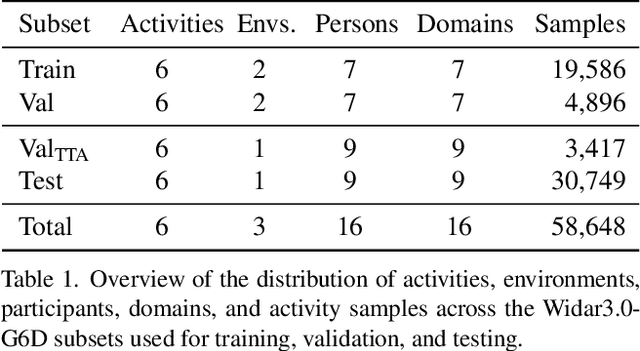
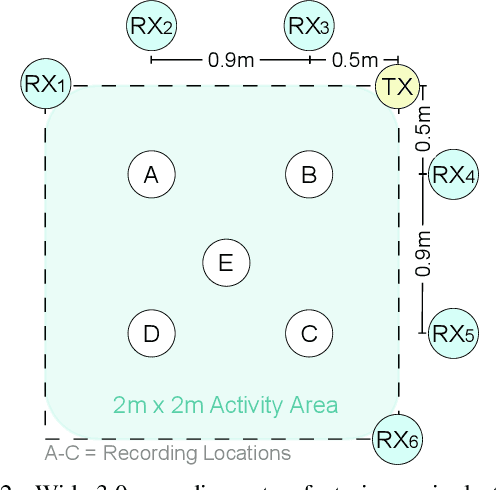
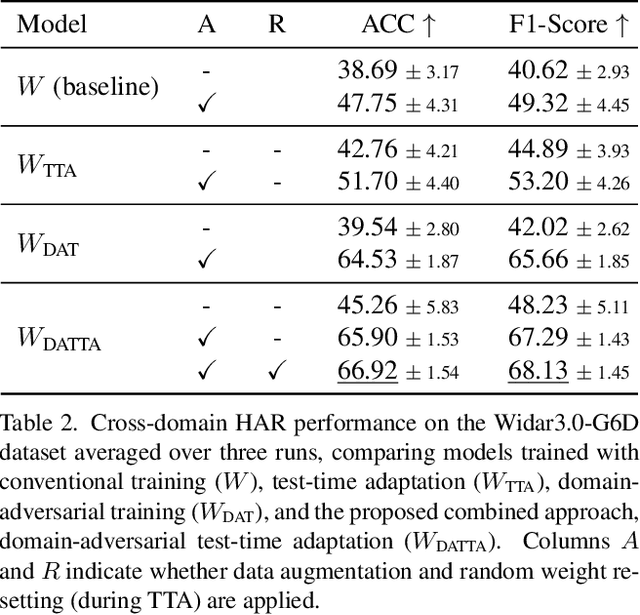
Abstract:Cross-domain generalization is an open problem in WiFi-based sensing due to variations in environments, devices, and subjects, causing domain shifts in channel state information. To address this, we propose Domain-Adversarial Test-Time Adaptation (DATTA), a novel framework combining domain-adversarial training (DAT), test-time adaptation (TTA), and weight resetting to facilitate adaptation to unseen target domains and to prevent catastrophic forgetting. DATTA is integrated into a lightweight, flexible architecture optimized for speed. We conduct a comprehensive evaluation of DATTA, including an ablation study on all key components using publicly available data, and verify its suitability for real-time applications such as human activity recognition. When combining a SotA video-based variant of TTA with WiFi-based DAT and comparing it to DATTA, our method achieves an 8.1% higher F1-Score. The PyTorch implementation of DATTA is publicly available at: https://github.com/StrohmayerJ/DATTA.
WiFlexFormer: Efficient WiFi-Based Person-Centric Sensing
Nov 06, 2024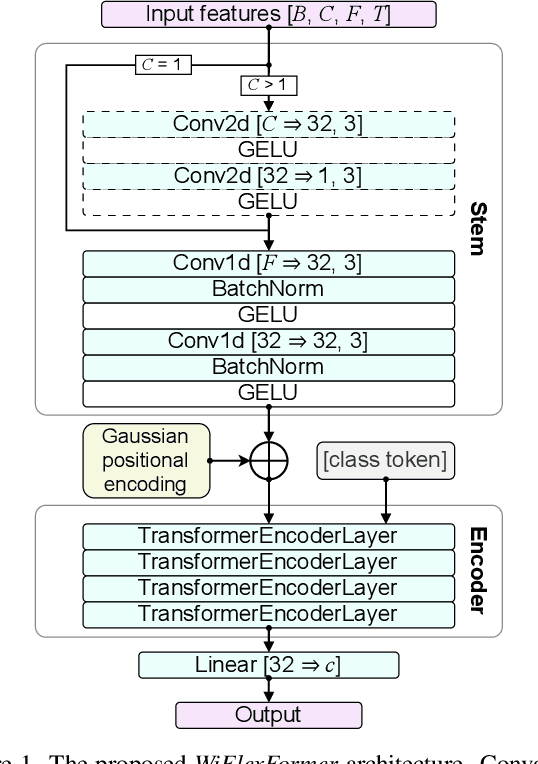
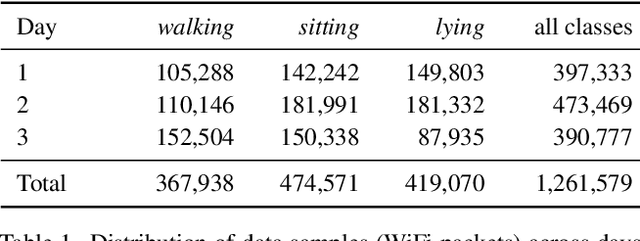

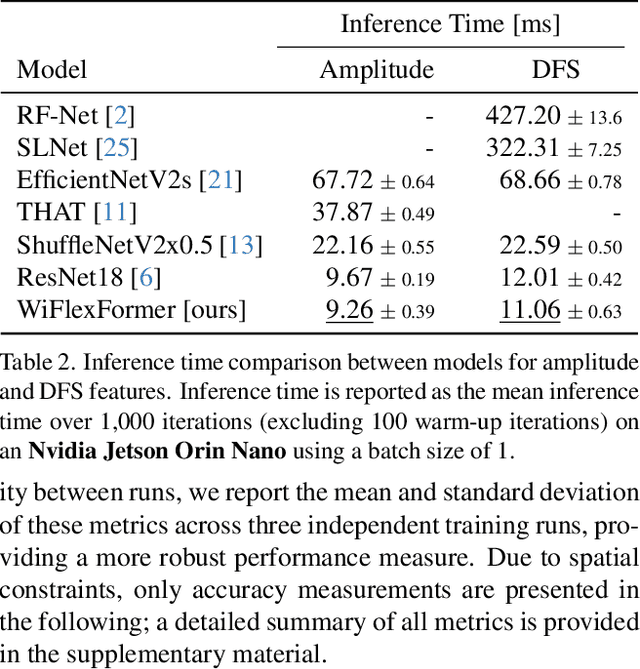
Abstract:We propose WiFlexFormer, a highly efficient Transformer-based architecture designed for WiFi Channel State Information (CSI)-based person-centric sensing. We benchmark WiFlexFormer against state-of-the-art vision and specialized architectures for processing radio frequency data and demonstrate that it achieves comparable Human Activity Recognition (HAR) performance while offering a significantly lower parameter count and faster inference times. With an inference time of just 10 ms on an Nvidia Jetson Orin Nano, WiFlexFormer is optimized for real-time inference. Additionally, its low parameter count contributes to improved cross-domain generalization, where it often outperforms larger models. Our comprehensive evaluation shows that WiFlexFormer is a potential solution for efficient, scalable WiFi-based sensing applications. The PyTorch implementation of WiFlexFormer is publicly available at: https://github.com/StrohmayerJ/WiFlexFormer.
Explainable Techniques for Analyzing Flow Cytometry Cell Transformers
Jul 27, 2023



Abstract:Explainability for Deep Learning Models is especially important for clinical applications, where decisions of automated systems have far-reaching consequences. While various post-hoc explainable methods, such as attention visualization and saliency maps, already exist for common data modalities, including natural language and images, little work has been done to adapt them to the modality of Flow CytoMetry (FCM) data. In this work, we evaluate the usage of a transformer architecture called ReluFormer that ease attention visualization as well as we propose a gradient- and an attention-based visualization technique tailored for FCM. We qualitatively evaluate the visualization techniques for cell classification and polygon regression on pediatric Acute Lymphoblastic Leukemia (ALL) FCM samples. The results outline the model's decision process and demonstrate how to utilize the proposed techniques to inspect the trained model. The gradient-based visualization not only identifies cells that are most significant for a particular prediction but also indicates the directions in the FCM feature space in which changes have the most impact on the prediction. The attention visualization provides insights on the transformer's decision process when handling FCM data. We show that different attention heads specialize by attending to different biologically meaningful sub-populations in the data, even though the model retrieved solely supervised binary classification signals during training.
ECSIC: Epipolar Cross Attention for Stereo Image Compression
Jul 18, 2023



Abstract:In this paper, we present ECSIC, a novel learned method for stereo image compression. Our proposed method compresses the left and right images in a joint manner by exploiting the mutual information between the images of the stereo image pair using a novel stereo cross attention (SCA) module and two stereo context modules. The SCA module performs cross-attention restricted to the corresponding epipolar lines of the two images and processes them in parallel. The stereo context modules improve the entropy estimation of the second encoded image by using the first image as a context. We conduct an extensive ablation study demonstrating the effectiveness of the proposed modules and a comprehensive quantitative and qualitative comparison with existing methods. ECSIC achieves state-of-the-art performance among stereo image compression models on the two popular stereo image datasets Cityscapes and InStereo2k while allowing for fast encoding and decoding, making it highly practical for real-time applications.
Automated Identification of Cell Populations in Flow Cytometry Data with Transformers
Aug 23, 2021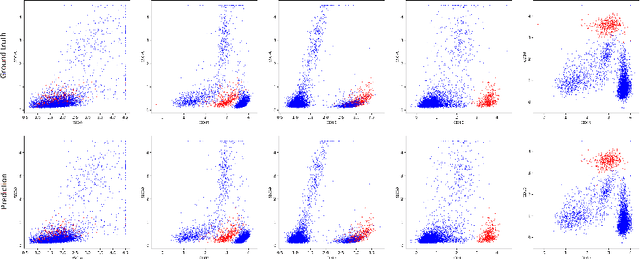
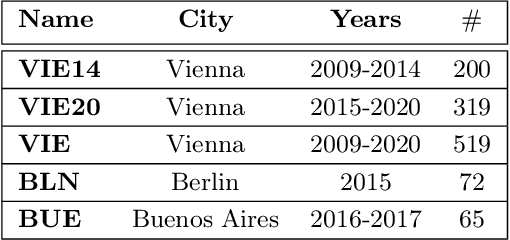
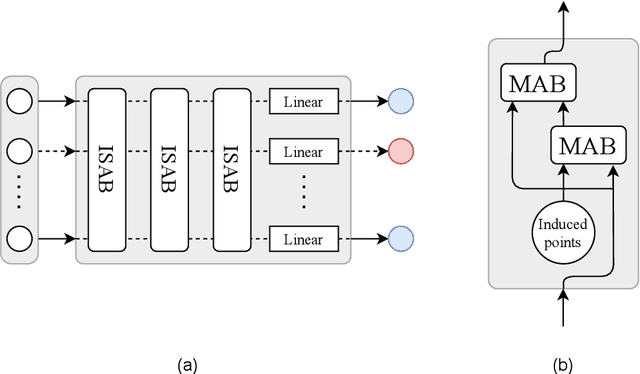
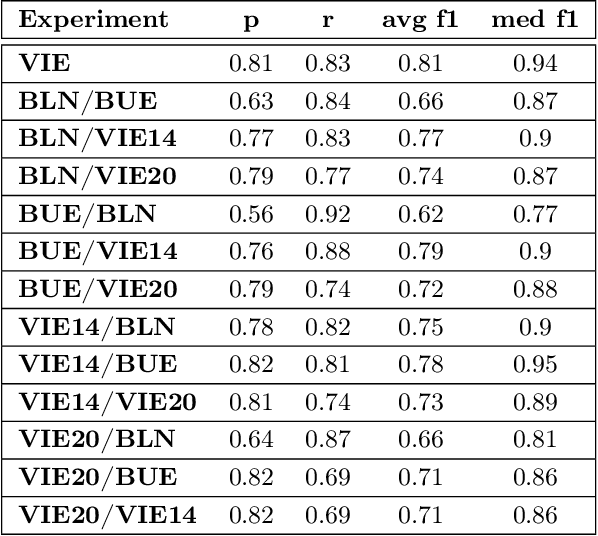
Abstract:Acute Lymphoblastic Leukemia (ALL) is the most frequent hematologic malignancy in children and adolescents. A strong prognostic factor in ALL is given by the Minimal Residual Disease (MRD), which is a measure for the number of leukemic cells persistent in a patient. Manual MRD assessment from Multiparameter Flow Cytometry (FCM) data after treatment is time-consuming and subjective. In this work, we present an automated method to compute the MRD value directly from FCM data. We present a novel neural network approach based on the transformer architecture that learns to directly identify blast cells in a sample. We train our method in a supervised manner and evaluate it on publicly available ALL FCM data from three different clinical centers. Our method reaches a median f1 score of ~0.93 when tested on 200 B-ALL samples.
 Add to Chrome
Add to Chrome Add to Firefox
Add to Firefox Add to Edge
Add to Edge